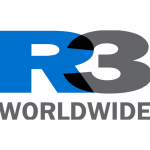It’s obvious that the structure of the advertising business has changed in recent years. Not quite so obvious is that the nature of the business has also changed.
Advertising has become industrialised. A field of business becomes “industrialised” when it is optimised for efficiency over craftsmanship.
If you’re making commodity products — pencils, nail clippers, shoe laces, cars — optimising for efficiency can be an excellent business strategy. Money is saved and once a satisfactory template model is created, reproducing thousands of copies is economical and advantageous.
It’s a little different, however, when you’re selling a service that is intended to be uniquely individual. In that case, optimising efficiency over craftsmanship can have bad results. I think you know where this is going.
I don’t think I’m being unfair when I say that the quality of advertising has gotten worse in recent years. Substantially worse. I will provide data to prove this to non-believers a little further down.
What I have found in my recent travels is that this is also true of our media strategies. Off the record chats with executives in media have opened my eyes to the fact that they, too, feel they are being pressed for efficiency over craftsmanship.
Imagined efficiencies are the drivers of programmatic buying. The fact that programmatic is notoriously dodgy and wasteful is not lost on media people. But sadly, agency management knows that turning buys over to a shady mechanised process is a type of faux-efficiency you can defend and monetise.
You have to credit the media agencies – and the entire agency business – for their ability to hide the true costs of their “efficiencies” from their customers. Among all the scandals, improprieties, and damaging revelations that the press has uncovered about AdTech and online advertising, has there been EVEN ONE that has been exposed by an agency? That’s what ya call a rhetorical question because everyone with a functioning neuron knows the answer is a big flaming no.
It’s not surprising that this has happened in advertising. When customers demand all-you-can-eat at reduced prices; when investors demand high returns regardless of circumstances; when “good enough” is the standard unit of quality, it is inevitable that craftsmanship will take a back seat.
There are several manifestations of industrialisation apparent in the ad industry now.
– First is consolidation. A tiny number of organisations control an enormous amount of the market.
– The ascendancy of online advertising. Because programmatic buying rides on a bed of technology, it has the appearance of efficiency. The fact that much of it is wildly inefficient is of little consequence. It is a very useful tool by which “industrialised” agencies can be profitable without paying for expensive craftspeople, and with little danger of clueless clients understanding what’s actually going on.
– People both inside and outside the ad business believe that the quality of advertising has gotten far worse. A headline in the NY Times not long ago stated, “The Advertising Industry Has A Problem. People Hate Ads.” Research indicates that regard for our industry has hovered at new lows in recent years. A recent study showed that compared to 20 years ago, twice as many people said they found advertising annoying.
– Talented people don’t want to work in advertising. According to the ANA (Association of National Advertisers) “We’re having a talent crisis, meaning there is not a shortage of talented professionals as much as a broader industry failure to convince them that full-time advertising roles are worth taking.”
It’s clear that the leaders of the ad industry – regardless of disingenuous pronouncements to the contrary – are satisfied with the state of things.
The best thing that could happen to the advertising business would be for clients to suddenly demand craftsmanship. Ain’t holdin’ my breath.
MARKETING Magazine is not responsible for the content of external sites.









